I’ve done well over a hundred school visits, lectures, and workshops about chickens. The first question that I get is not Why did the chicken cross the road? or even Which came first, the chicken or the egg? I often have a hen with me, and the most obvious thing about that bird, the thing that seems to make no sense at all, is the comb. What’s it for? is asked by children and adults alike.
There is no definitive answer. There are a lot of good guesses.
It’s red, it’s fleshy, it’s a sensitive thing and the chicken doesn’t like you touching it.
One theory is that it functions as part of the chicken’s cooling system. Hot blood pulses through the comb, which is then cooled off by air before it circulates back into the body, which is rather like how a rabbit’s long and thin ears help to keep her cool. I have noticed that my hens with the big combs cope with hot weather better than my other breeds, but that might be more about their lean body type and fewer downy feathers, rather than comb size. In the winter, those big combs are susceptible to frostbite and windburn. This is why “cold-hardy” breeds have combs that are close to the head.
Another role that the comb plays is in recognizing individuals among the flock. Back in 1953 a few PhD candidates looked into what physical trait was the one that chickens paid the most attention to when identifying members of the flock. They glued extra feathers on hens, altered the tails, dyed the heads, and changed the combs. Their conclusion was this: Alterations of the comb appeared to be somewhat more effective as a disguise than were any of the other alterations. Personally, I love the use of the term “disguise.” I imagine that if one of my hens were to wear a hat, that she could move about the flock incognito.
Roosters, of course, have the largest combs, and also those red dangly things under their chins called wattles. Research has shown that the wattles help the roo to communicate when he does “the tidbit dance” – which is when he is enticing his girls to come and eat food that he’s found. But, too big wattles put the girls off. Bigger is not always better.
The progenitor of the domestic chicken is the Red Jungle Fowl, found in the steamy undergrowth of the forests of Burma (for an excellent history of the domestication of fowl, read this book.) The jungle fowl had a modestly sized comb. See a photo of a taxidermic rooster here.
Go further back in history to the age of dinosaurs, and you’ll find upright protuberances decorated some of these creatures’ heads. Some crests were bony, but new discoveries show some were fleshy combs. Over millions of years of evolution, some of those dinosaurs morphed into chickens, which kept, among other traits, the combs of their distant ancestors.
If you go to a poultry show, or have a collection of various breeds in your home flock, you’ll notice that there is a huge variation in combs. This has nothing to do with function, but everything to do with fashion. For thousands of years, humans have been breeding chickens to look the way that we want and there is no correlation between style and original purpose. Whatever shape is on your hens (from floppy to low and bumpy) it is one of the best clues to the health of your birds. The comb is often the first indicator of something amiss with your hen. If shriveled or darkened there is certainly an ailment. Chickens are so aware of each other’s combs that the flock might see the problem before you do. If a hen who’s been getting along fine with everyone suddenly has blood on her comb from pecking, I immediately check the status of her health. Sometimes the Spa Treatment makes things right, but sometimes it’s a sign of something very wrong, indeed.
For many years I had a preference for the classic-looking upright comb with about five lobes. The Wyandotte’s pea comb never looked right to me, and the Polish, with no comb, but instead the pouffy feathered hat, looked ridiculous. Lately, though, I am partial to the extravagant combs on Misty and Twiggy. Do you have a favorite comb style?
Just a reminder – if you like this blog, please share it with friends and on social media. My readers sustain this site, and the larger community that I have, the more resources I can put into the HenCam. Thanks!
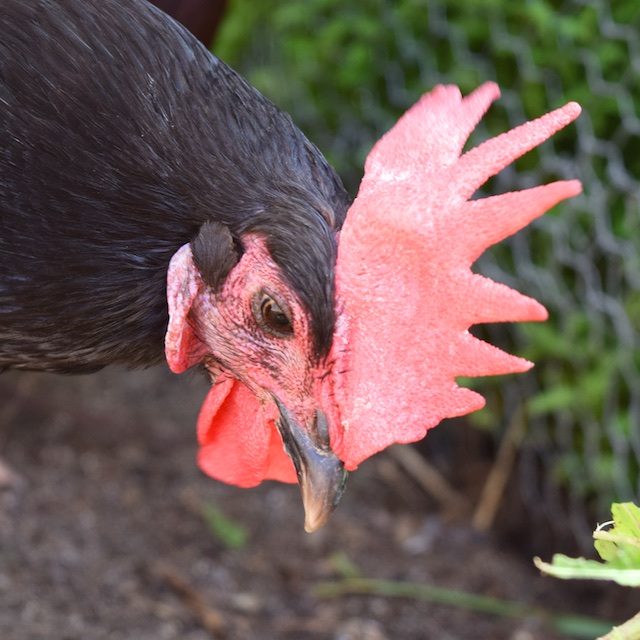
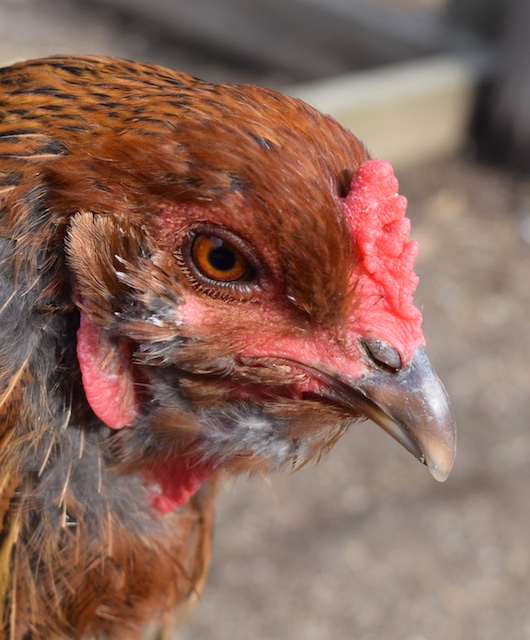
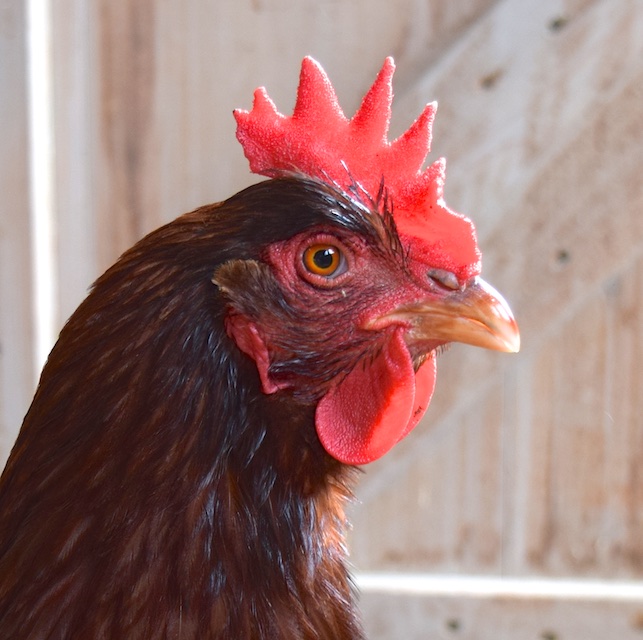
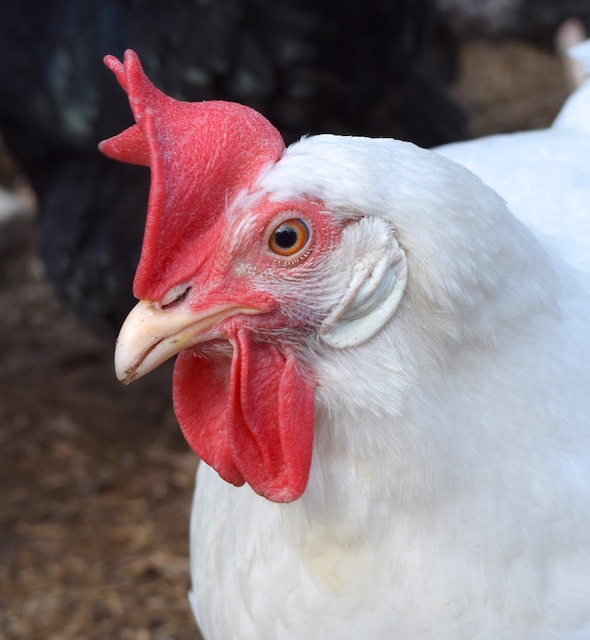
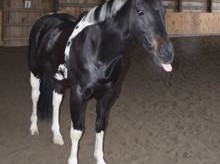
I love reading this blog and learning something new about chickens each time I do! Thank you Terry.
I was prompted to write this post because of the children that I meet through your Kids Cooking Green programs (readers – click on her link – a wonderful organization that I’m privileged to work with.) They all want to know about combs!
I actually had a SLW with the traditional comb with the 5 lobes while the others had the short squat no love combs and My polish had like red devil horns for a comb in front of her bouffant. It is funny how they vary from bird to bird
I’m more of a tradition comb guy.
Funny, I just saw this article and I loved the video. The Chicken is leery of his human friend due to a new haircut. He own Comb.
http://jezebel.com/watch-this-fabulous-chicken-judge-the-hell-out-of-a-kid-1704331995
Wonderful post, Terry!
This paper from Guhl is excellent! I keep wondering how he had the idea of disguising the girls. Certainly it must have been a very funny experiment!
By the way, my favorite comb: the simple one, upright and with five lobes. But I really think the looped-sided from the Leghorns are such a charm!
The Polish chickens are so ridiculous, they are adorable! We’ve always had 1 or 2 White-crested Black Polish in our flock. When they are chicks, their head poof is yellow and reminded us of the (former) basketball player, Dennis Rodman, when he had bleached his hair. So, naturally, we named one of our Polish chicks, “Dennis”. Turned out the chick was female, so she became “Denise”. Then, since we had a “Denise”, the other Polish chick was named “DeNephew”. :-) They are also affectionately called Doofus and Nutsy. :-)
We now also have a White-crested Black Polish rooster. He is the most *mellow* rooster we’ve ever had. Like all the other roosters, it was the “luck” of the draw since we wouldn’t have normally wanted any roosters at all. But this rooster is very protective and considerate of his ladies. Most importantly, he doesn’t attack us. With his wildly extravagant hairdo, we have named him … Einstein. Because he mostly definitely is *not*. :-)
Naming the Polish chickens is the most fun of all :)
I have never thought much about their combs…I guess because the egg color was why I chose my breeds….Now after this blog , I must think and ponder which is my favorite. The leghorn comb is probably one of my favorites, but my Buffs and Plymouth’s are very “beautious” also. This is a very difficult choice…….hmmmmm:)
I love the combs on Scilcian Buttercup roosters, but alas I had to find a home for mine( with your help). King Louie ended up in South Carolina where is is still living to this day.
Good to hear that King Louie still reigns!
Any style of large comb will do, I do not like the small pea comb they always makes me thing they have not fully formed and something is wrong. Nice blog :)
I stumbled across your blog and It’s the best thing since sliced bread! thank you!! thank you!! thank you! so many questions answered! passing this on to others.
Thanks for this post, I learned something new! I never really gave much thought to their combs (and wattles). Interesting!
Terry, you are the main reason that I will feel safe and knowledgeable , once I retire and start my own flock. I have followed you for years, and have amassed much practical knowledge; I’ve printed quite a bit as well. I know that when I start my flock, I can easily come to your blog for any advice that I need. SO much better than using just a book. Thank you!!